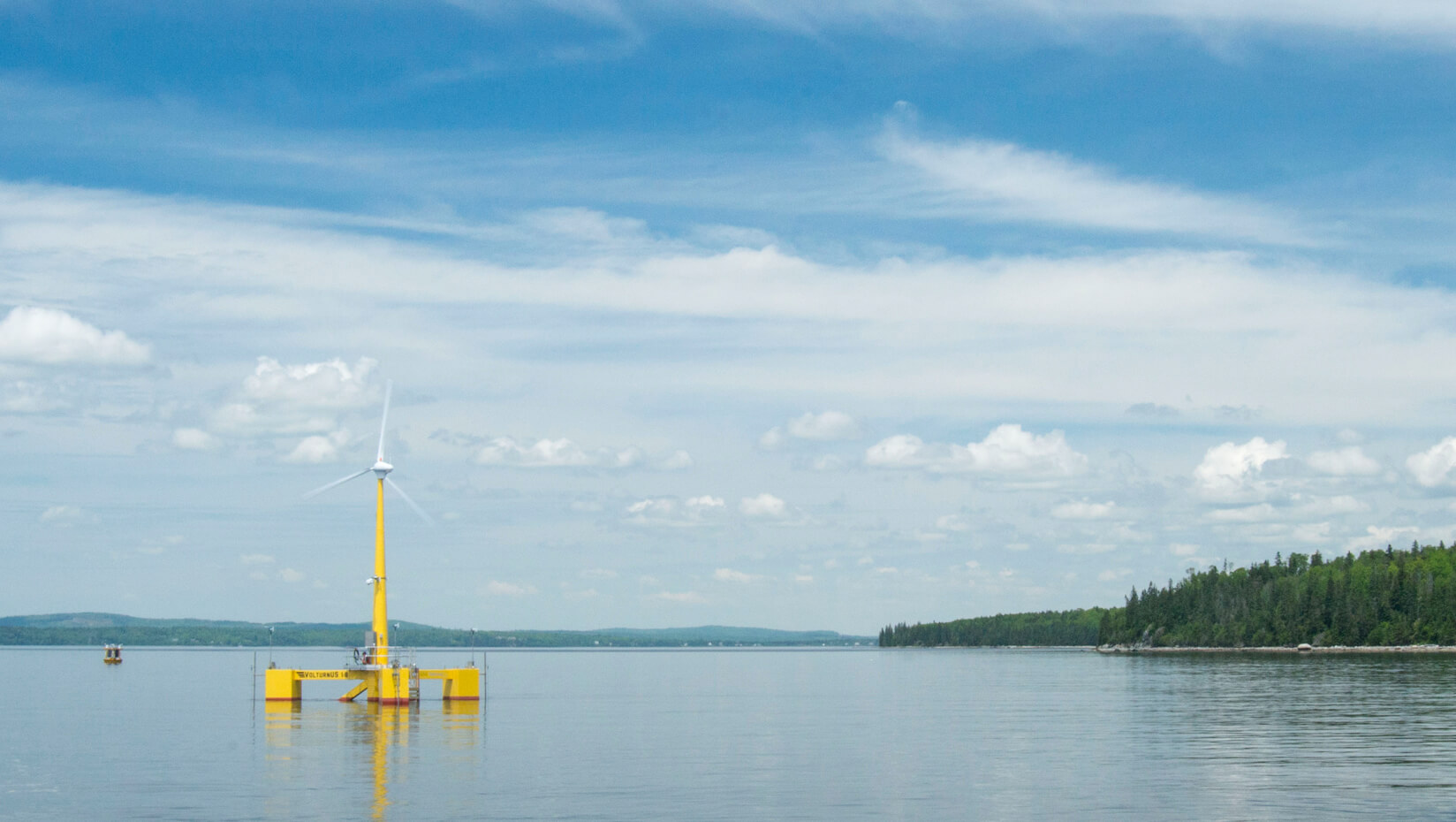
UMaine-led offshore wind project receives additional $3.7 million from DOE
The University of Maine-led New England Aqua Ventus I offshore wind project will be awarded an additional $3.7 million from the U.S. Department of Energy (DOE), subject to appropriations, to complete engineering and planning work, and approach financial close.
The funding, announced by Sens. Susan Collins and Angus King in a joint statement Nov. 16, is in addition to $3 million awarded by DOE in September 2014 to advance the design to deployment readiness.
“The continued confidence of the Department of Energy in the University of Maine’s Offshore Wind Demonstration Project speaks to the value of our research and development efforts — and the great potential to make a difference in this state and beyond,” said UMaine President Susan J. Hunter. “This additional funding recognizes the significant technology advancements UMaine and its partners have made on this project in the past year, and it makes possible even greater progress. We appreciate the leadership and vision of Maine’s Congressional Delegation that have helped make this, and other federal funding, a reality for Maine.”
In May 2014, New England/Maine Aqua Ventus I was selected as an alternate by the DOE for the next phase of its Advanced Technology Demonstration Program, which started out with nearly 70 projects. At that time, DOE provided UMaine with $3 million and noted that Maine’s VolturnUS technology, which was successfully demonstrated on a pilot scale near Castine, Maine, was highly favorable and innovative, and “with additional engineering and design, will further enhance the properties of American offshore wind technology options.”
Since then, the data collected from the single VolturnUS 1:8 scale turbine demonstrated the viability of the floating concrete and composites hull. VolturnUS 1:8, the first grid-connected offshore wind turbine deployed off the coast of North America, was launched in Brewer May 31, 2013 by the University of Maine’s Advanced Structures and Composites Center and its partners. The prototype — the first concrete-composite floating platform wind turbine deployed in the world — remained off the coast of Castine, Maine for 1.5 years.
Over 50 onboard sensors measured waves, wind, current, motions and stresses on the floating platform. Relative to its 1:8 scale, the Castine unit saw 37 storms with return periods from 50 to 500 years, including relative wave heights equivalent to 70 feet. The data collected was used to further optimize the full-scale 6 MW concrete hull design. Over the past year, cost studies were conducted with contractors from Maine and across the U.S. and the world to demonstrate the cost-reduction advantages of the VolturnUS floating concrete hull technology.
In their joint announcement, Sens. Collins and King stated: “This extraordinary investment is proof that the DOE recognizes what we have long known: that the Gulf of Maine is a tremendous resource for wind energy that could provide an affordable source of renewable energy directly to the country’s population centers on the East Coast, while creating thousands of new jobs in Maine and diversifying the state’s electricity supply. We will continue to support the University of Maine as it participates in this demonstration program and to help ensure that Maine remains at the forefront of deepwater, offshore wind power development and innovation.”
“We are pleased that the Department of Energy decided to award the University of Maine an additional $3.7 million to put the New England Aqua Ventus I Demonstration Project on financial par with the other DOE-funded offshore wind demonstration projects,” said Professor Habib Dagher, executive director of UMaine’s Advanced Structures and Composites Center and principal investigator of the DeepCwind Consortium.
“We continue to make significant progress by demonstrating the technical advantages and cost reductions of the VolturnUS floating concrete offshore wind technology,” Dagher said. “Our team is busy putting the final touches on the design of the 6MW hulls for the two-turbine, 12MW demonstration project. The additional funding will help us complete all aspects of the project planning, negotiate supply contracts with industrial partners and approach financial close for the project. The UMaine VolturnUS technology has important national impact as it allows us to more cost effectively access over 50 percent of the U.S. offshore wind resource in deep waters within 50 miles of the coast, and creates local and regional jobs as the hulls can be produced near the project site.”
New England/Maine Aqua Ventus is considered part of the DOE’s offshore wind portfolio under the Offshore Wind Advanced Technology Demonstration Projects, along with projects in Virginia, New Jersey, Oregon and Ohio.
Decisions on which of the five projects advance and receive an additional $40 million will be made by DOE by May 31, 2016, according to DOE.
Contact: Jennifer O’Leary, 207.515.3341
